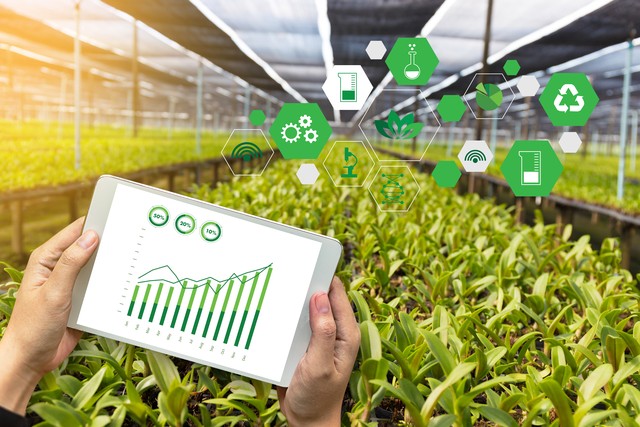- Location : Home» Newsroom
Technology adoption a key driver of greater global food production
The world needs to invest more in agricultural know-how to bolster food yield, curb rural poverty and combat climate change, according to a consensus reached by a global panel of farming technology leaders on Thursday.
Technological innovation is the crucial driver for transforming the global agri-food systems, according to the Sanya Declaration of the 7th Global Forum of Leaders for Agricultural Science and Technology.
Progress in the area plays a pivotal role in enhancing the world's agricultural production capacity, revolutionizing agricultural sectors, and promoting rural development, the declaration said.
Experts attending the forum called upon governments — especially those in developing countries and possibly facing dire food supply issues — and agricultural enterprises worldwide to step up funding for agricultural research and technology dissemination, such as by training more talent.
They pledged to work more closely in agricultural science and technology, with the aim of helping reform agri-food systems and addressing global challenges ranging from food insecurity to poverty to climate disasters, and help achieve the goals of the China-proposed Global Development Initiative.
"Efforts should be made to turn global agri-food systems toward being more efficient, inclusive, resilient and sustainable, through enhancing green agricultural technological innovation, climate change adaptation, carbon sequestration and emission reduction in agriculture, and reducing food losses and waste across the entire production chain," the declaration said, adding such expertise is the underlying pillar for achieving "energy-efficient, emission-reducing, green and low-carbon sustainable agricultural development".
Participants lauded the Chinese Academy of Agricultural Sciences, the forum's organizer, for launching the International Mega Science Project from Genotype to Phenotype Initiative, which helps with the sharing of crop genetic resources and offers public products and platforms for molecular breeding.
They also welcomed the idea of the China-Africa Agricultural Science and Technology Innovation Alliance initiated by the CAAS and its African counterpart, the African Academy of Sciences.
The alliance is meant to be an open and shared platform for coordinating agricultural technology institutions and the industry sector, promoting hunger and poverty reduction in Africa, advancing agricultural modernization, and helping reach goals set by the African Agenda 2063.
According to the CAAS, about 580 representatives from 49 countries and 16 international organizations worldwide attended the forum and its side events.
They reached the consensus after extensive discussions on the theme of "Science and Technology Leading the Transformation of Global Agri-food Systems".
The forum, known as GLAST, opened on Thursday in the seaside resort of Sanya in Hainan province, which is better known for its palm trees and beaches. In recent years, Sanya, seat of a sprawling national seed breeding base, has turned into an emerging hub for international farming know-how exchanges.
The four-day event was organized by the CAAS alongside the provincial government of Hainan, the Food and Agriculture Organization of the United Nations, the Consultative Group on International Agricultural Research, and the International Atomic Energy Agency.
Addressing the event's opening ceremony, CAAS President Wu Kongming said China's agricultural science community has worked with the government and farmers to successfully feed 1.4 billion people, improving their living standards and nutrition.
He noted that one-fifth of the world's population consumes 700,000 metric tons of grain, 98,000 tons of cooking oil, 1.92 million tons of vegetables and 230,000 tons of meat daily. "It is immense work to meet such needs."
With that in mind, Wu said the country is fast-tracking agricultural innovations and modernizing its farming sector in an "efficient, secure, continuous" fashion, adding technologies and better equipment — such as more water-saving irrigation systems and plowing machines designed for mountainous areas — are contributing a greater share to food production-related progress.
According to the FAO and the World Bank, about 9.2 percent of the world's population still live in persistent hunger and 660 million people worldwide are grappling with extreme poverty. The world's food supply needs to be increased by 70 percent by 2050 to meet the rising demand.
Wu said the initiative can help pool resources to bring about breakthroughs in food production and eliminate hunger on the African continent.
